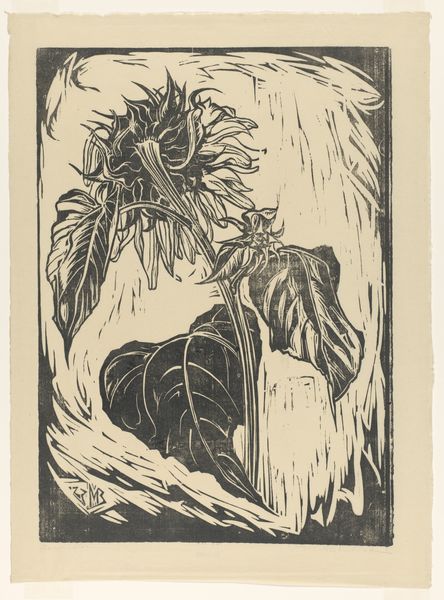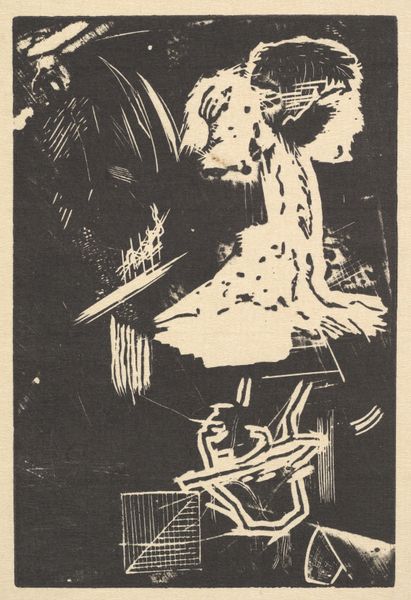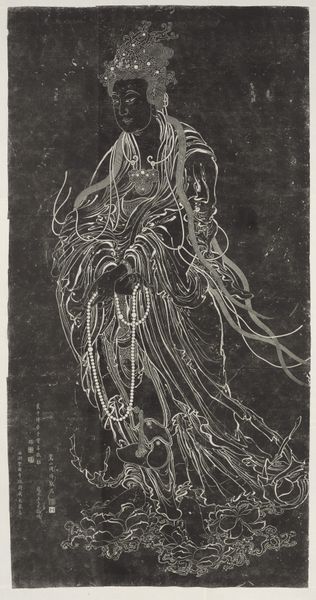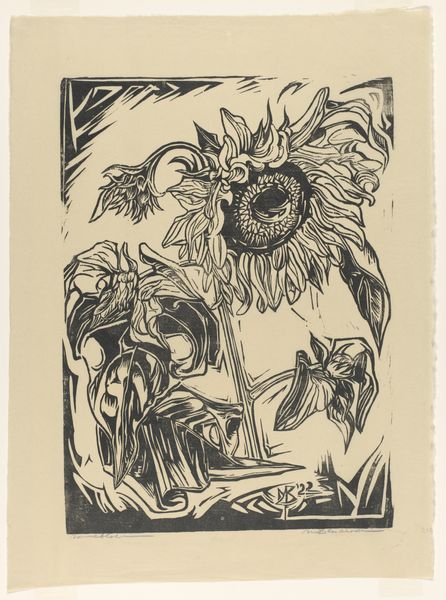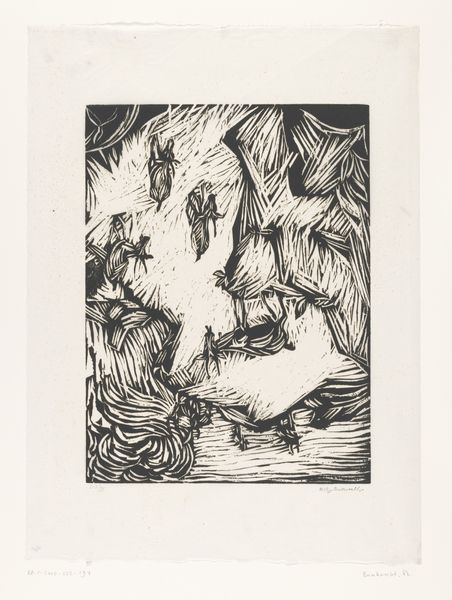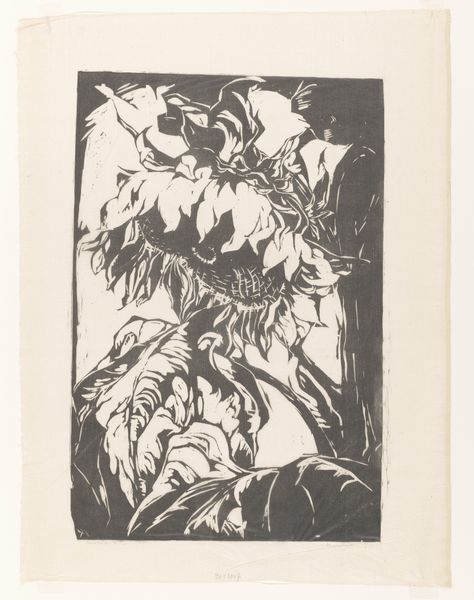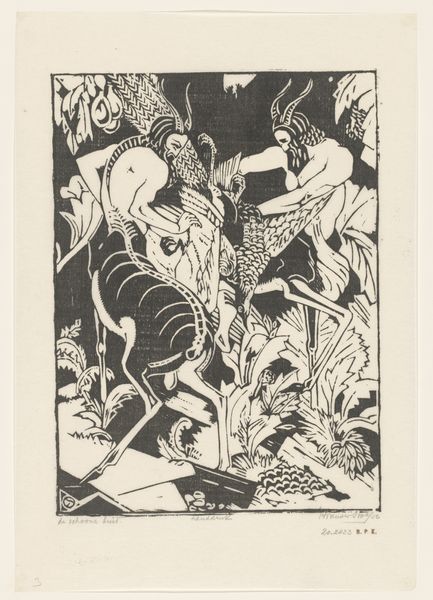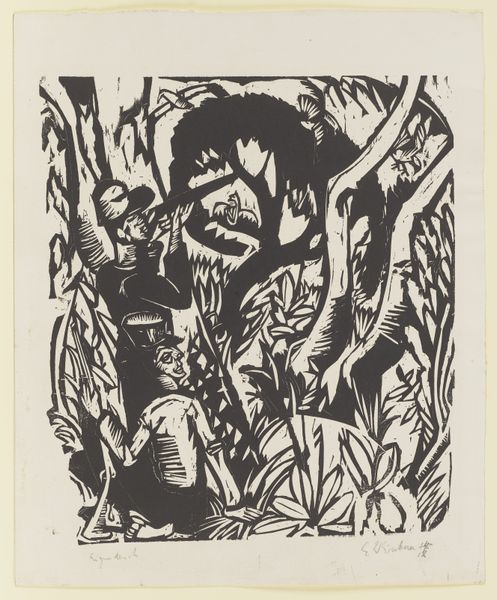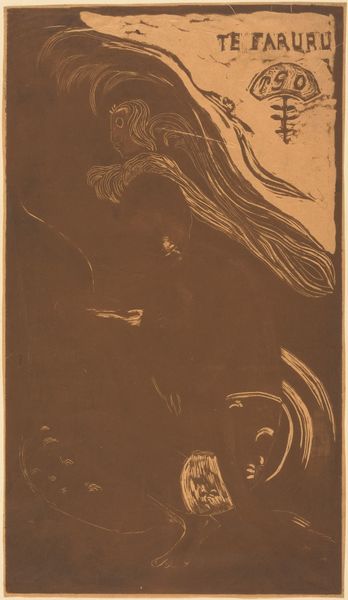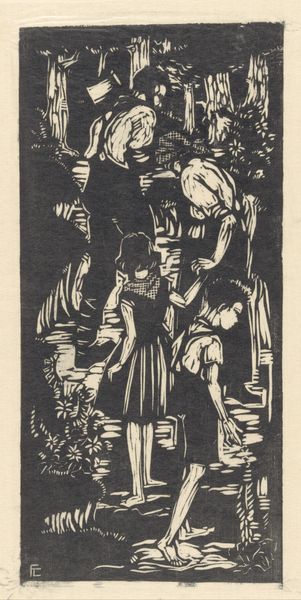
print, woodcut
#
portrait
#
ink drawing
# print
#
etching
#
german-expressionism
#
figuration
#
linocut print
#
woodcut
#
line
Dimensions: plate: 22.8 × 17.9 cm (9 × 7 1/16 in.) sheet: 31.6 × 24.5 cm (12 7/16 × 9 5/8 in.)
Copyright: National Gallery of Art: CC0 1.0
Editor: This is Wilhelm Morgner’s "Bärtiger Mann," created in 1912 using, I believe, woodcut or linocut. The stark contrast and aggressive lines create a really intense feeling...almost unsettling. What do you see in this piece, particularly in how it communicates that feeling? Curator: I see the enduring power of archetypes. The "bearded man" motif recurs across cultures, often signifying wisdom, age, or even a connection to nature. Morgner's rendering, however, disrupts these associations. He doesn't present a figure of serenity, but one consumed by internal turmoil, wouldn't you agree? Editor: Absolutely. It's like his beard and hair aren’t comforting but chaotic, mirroring a turbulent mind. Is that something that the Expressionists commonly explored? Curator: Yes, Expressionism sought to externalize inner emotional states. Look at the very *lines* themselves – jagged and erratic, not smoothly descriptive. This is a conscious effort to portray the *experience* of inner chaos, not just the outward appearance of a man. Think of it: is he an elder or a wild man, barely constrained by society? Editor: It's fascinating how those lines can hold so much symbolic weight. So it’s like Morgner's playing with the *idea* of the wise elder, and then subverting our expectations through the execution. Curator: Precisely. It’s about visual vocabulary. Morgner utilizes established symbols, but injects them with personal, psychological meaning, accessible even now because these core cultural components still resonate with us. What's most evocative to you, now that we’ve looked more closely? Editor: For me, it’s the way the artist uses the symbolic nature of the “bearded man" figure, then challenges its meaning and representation so powerfully with those aggressive, fragmented lines. I never thought of an art piece as subverting visual vocabulary that way! Curator: And I am reminded that visual vocabularies evolve, yet their power remains, doesn't it?
Comments
No comments
Be the first to comment and join the conversation on the ultimate creative platform.
